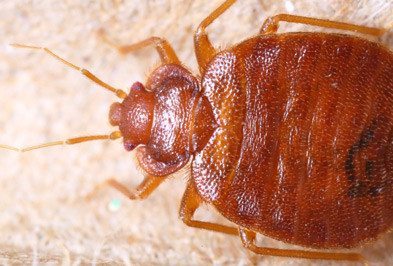Discovering the Science Behind Bed Bug Warmth Treatments as a Lasting Parasite Monitoring Method
In the realm of parasite management, the mission for reliable and sustainable solutions continues to be a continuous pursuit. One such method that has actually obtained grip over the last few years is using warm therapies to deal with bed pest invasions. By using the scientific research behind thermal fatality points for these persistent pests, warmth treatments supply an encouraging alternative to conventional chemical-based methods. The ins and outs of how warm successfully removes bed insects and the more comprehensive ramifications for sustainable insect administration methods make this a topic worth checking out better.
Bed Bug Warm Therapy Process

Thermal Fatality Factor for Bed Pests
Revealing bed pests to raised temperatures past their thermal resistance variety is critical for accomplishing efficient elimination in warmth therapy processes. The thermal fatality point for bed bugs describes the temperature level at which these pests can not endure. Research shows that bed insects begin to die when exposed to temperatures over 113 ° F(45 ° C) for a continual duration. As the temperature level boosts, so does the mortality price of bed insects. At around 118 ° F(48 ° C ), bed bugs start to pass away rapidly, with a death price of almost 99% within mins of direct exposure. This demonstrates the sensitivity of bed bugs to high temperatures and highlights the performance of warmth treatments in eradicating invasions. By getting to and preserving temperature levels over the thermal fatality point for bed bugs, parasite monitoring experts can ensure detailed removal of bed bug populaces, including hard-to-reach areas where chemical therapies might be less efficient. Understanding the thermal death factor for bed pests is necessary for carrying out effective heat therapy techniques and achieving sustainable pest monitoring results.
Benefits of Warmth Treatments
Having actually established the critical thermal death point for bed pests, it is imperative to currently discover the considerable benefits that heat treatments use in properly getting rid of these resistant parasites. Warmth treatments present several key advantages when compared to typical chemical methods. Among the main advantages is that warm can penetrate deep right into cracks and gaps where bed insects hide, making certain that also the most hard-to-reach locations are heated up to dangerous temperature levels. This comprehensive method not only kills real-time pests yet likewise targets bed pest eggs, stopping future invasions.
Moreover, warm treatments are safe and ecologically pleasant, making them a lasting pest management approach. Unlike chemical pesticides, heat treatments do not leave harmful residues that can position risks to human health and wellness or the setting. This element is specifically crucial in sensitive atmospheres such as hospitals, review institutions, and suburbs where chemical use may not be preferable.
Additionally, warm treatments have a high success price in eliminating bed bug invasions in a solitary therapy, minimizing the requirement for numerous gos to and reducing disturbance to occupants. This effectiveness not only conserves time and cash but additionally supplies assurance to those taking care of bed pest problems.
Effectiveness of Warmth Therapy

Warm treatments have the added benefit of eliminating bed insect visit this web-site eggs, which are often immune to traditional chemical treatments. Overall, the effectiveness of warm treatments in removing bed bug problems makes them a lasting and trusted pest management strategy.
Sustainable Insect Management Advantages
Applying sustainable pest monitoring practices provides lasting advantages for both the atmosphere and public health and wellness. By making use of techniques such as warm therapies for pest control, we can decrease the dependence on harmful chemical pesticides that can have unfavorable impacts on environments and human health and wellness - exterminator. other Lasting pest management methods assist in protecting biodiversity by targeting certain pests without harming non-target microorganisms, thus maintaining a well balanced ecological community
Furthermore, lasting bug monitoring methods contribute to the total wellness and wellness of the public. By minimizing exposure to poisonous chemicals used in typical parasite control techniques, warm treatments give a much safer alternative for pest monitoring in domestic, business, and public rooms. This reduction in chemical usage likewise assists in protecting against pesticide residues from contaminating water, air, and soil, protecting environmental quality.
Verdict
In final thought, bed insect warm therapies have actually been shown to be a reliable and lasting parasite administration approach. The thermal death factor for bed insects makes them prone to heat therapies, which have various benefits over typical chemical therapies. The effectiveness of heat treatments in eliminating bed insect invasions while decreasing environmental effect highlights the possibility of this approach as a lasting solution for pest control.
The bed bug heat treatment process includes increasing the temperature within plagued locations to a degree that successfully gets rid of bed pests and their eggs. By getting to and keeping temperatures over the thermal fatality point for bed bugs, bug monitoring specialists can make sure thorough removal of bed pest populaces, consisting of hard-to-reach locations where chemical therapies may be less efficient. One of the main advantages is that heat can pass through deep right into splits and holes where bed insects hide, guaranteeing that even the most hard-to-reach locations are heated up to deadly temperatures. Unlike chemical therapies that might leave behind resistant populations, warmth therapies offer a eco pleasant and non-toxic solution that can pass through deep into furniture, wall surfaces, and other hard-to-reach areas where bed pests hide.
The thermal fatality factor for bed bugs makes them susceptible to warm therapies, which have numerous benefits over typical chemical treatments.